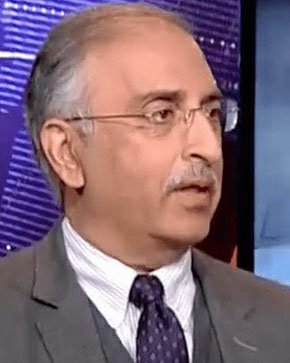Dr. Farrukh Saleem
SOME 10,000 years ago, we were hunter-gatherers primarily dependent on wild foods for subsistence. Back then, the burdens of life included predators, famine and disease.
The conception of a ‘state’, a political entity under a system of governance, is a relatively recent phenomenon.
The idea of a state, first and foremost, revolves around reducing the burdens of life on its citizens. All states-and all governments-are meant to pursue methods to reduce the burdens of life on their citizens. Here’s an account of ‘burdens of life’ in the state of Pakistan’ under the PTI government:
The burden of wheat-flour: We consume an average of 115 kg of wheat-flour per capita per year. In 2018, 212 million Pakistanis collectively paid Rs850 billion to buy 25 million tons of wheat flour.
In 2021, Pakistanis would have to cough out Rs1,800 billion to buy their flour requirement. On a per-capita basis, the burden of buying flour on every man, woman and child in this country has gone up from Rs4,000 in 2018 to Rs8,000 in 2021.
The burden of wheat-flour has gone up by 100 percent (never in Pakistan’s history has the price of wheat doubled in a period of around 2 years).
The burden of sugar: We consume an average of 25 kg of sugar per capita per year. In 2018, Pakistanis collectively paid Rs300 billion to buy the sugar they needed. This year, Pakistanis must cough out Rs500 billion to buy the sugar they need.
On a per-capita basis, the burden of buying sugar on every man, woman and child in this country has gone up from Rs1,300 in 2018 to Rs2,200 in 2021. The burden of sugar has gone up by 60 percent (never in Pakistan’s history has the price of sugar gone up by more than 60 percent in a period of around 2 years).
The burden of electricity: Every man, woman and child in this country consumes an average of 450 kWh. In 2018, Pakistanis collectively paid Rs1,000 billion to buy their electricity and this year it’s going to be Rs2,000 billion. On a per-capita basis, the burden of buying electricity on every man, woman and child in this country has gone up from Rs4,500 in 2018 to Rs9,000 in 2021.
The burden of petrol: In 2018, the government collected Rs82 billion under the guise of ‘petroleum levy’. By 2020, the same ‘petroleum levy’ had gone up to Rs275 billion.
In 2018, Pakistanis paid Rs850 billion for all the petrol they bought. This year, Pakistanis would have to pay around Rs1 trillion; an additional burden of Rs150 billion (the price of petrol has gone up from Rs95 a litre to Rs111.90 a litre and petroleum levy has gone up from Rs10 a litre to Rs30 a litre).
In 2018, each and every Pakistani family on average spent less than Rs100,000 to buy their wheat-flour, sugar, electricity and petrol. This year, each and every Pakistani family would have to cough out Rs170,000 to buy the same flour, sugar, electricity and petrol.
That’s an additional burden of Rs70,000 for each and every family. The burdens of life are increasing-not decreasing.
Lo and behold, as the burdens of life are becoming heavier by the day the average per capita income has gone down from $1,482 in 2018 to $1,130 in 2020. That’s double jeopardy- an increase in burdens of life in-tandem with a decrease in per capita income.
The government tells us that Large Scale Manufacturing is doing really well. Good. The government also tells us that the textile sector is booming. Very good. The government also tells us that the construction industry is booming. Great. The government further tells us that the current account deficit has turned into a surplus. Excellent. The real question remains if the burdens of life on a common Pakistani are increasing or decreasing.
In 2018, PTI Manifesto ‘The Road to Naya Pakistan’ had pledged to “pay-off the massive national debt accumulated over the last decade.” ‘The Road to Naya Pakistan’ had promised that “PTI will turnaround State-Owned Enterprises (SOEs).” ‘The Road to Naya Pakistan’ had vowed to “reform public processes as procurement….” Any progress?
The burdens of life on a common Pakistani must come down. The PTI government must undertake a midterm course correction. There’s no other way but course correction.
Maintaining the status quo will further increase the burdens of life. Maintaining the status quo will be good neither for PTI nor for Pakistan. PIA confiscation of assets etc.
The writer is a senior columnist and writer based in Islamabad.
http://twitter.com/pakobserver
https://twitter.com/SaleemFarrukh










